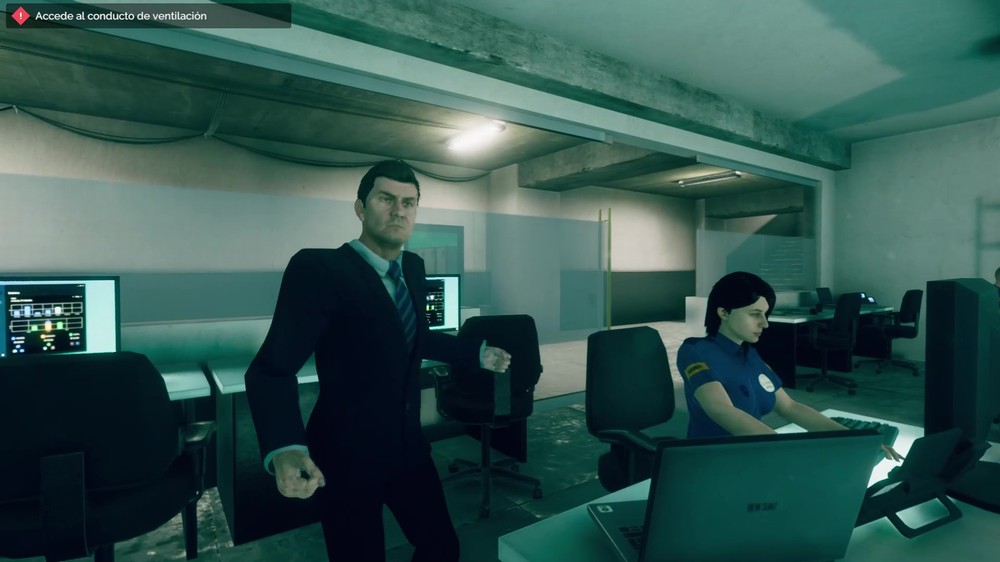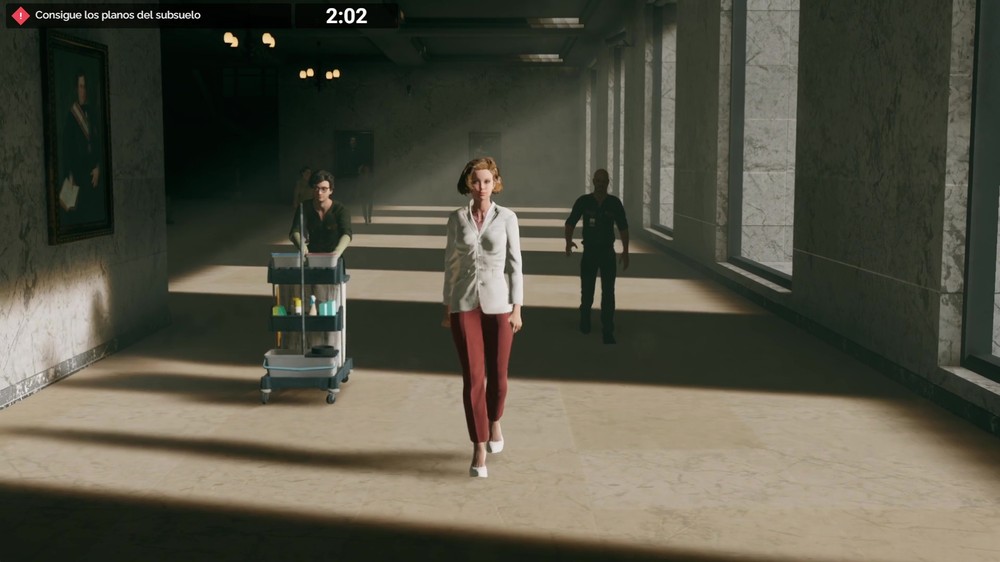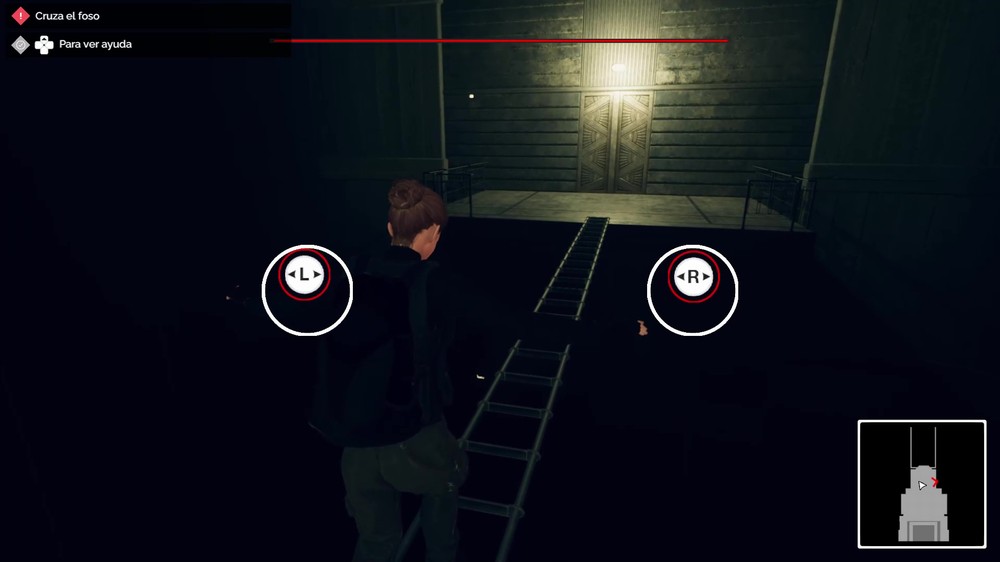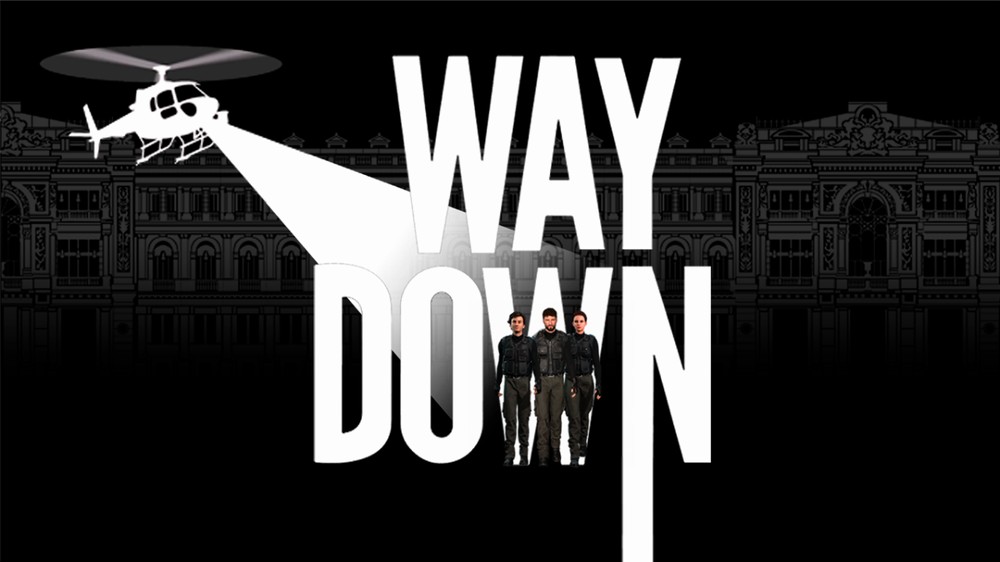Yet another title to hit US markets from Sony Interactive España’s PlayStation Talents initiative, Way Down is a videogame tie-in to the Sony Pictures heist thriller Way Down (aka The Vault in the US markets) set in Spain during the 2010 World Cup Championship game. Developed by independent Spanish developer FAS3 Estudios for Spain’s Mediaset Studios conglomerate, Way Down’s presser promises as immersive, action-packed spy adventure – but what it actually delivers is a soulless and plodding collection of fetch quests and minigames that make even the slowest Hitman missions seem exciting.
Way Down puts gamers in the shoes of a band of thieves who have been assembled by an oceanographic salvage company to steal back their recently salvaged Treasure of Guadalupe from the heavily fortified vault deep within the Bank of Spain, where it is being kept upon seizure by the Spanish government. Realizing that the 2010 World Cup Championship Game (Spain v. Netherlands) would serve as an opportune 90-plus minute distraction, the multi-talented team sets out to breech the Bank’s security while all eyes are on the game.
 But while the premise of Way Down sounds rather exciting on paper, the actual execution of the videogame tie-in leaves a lot to be desired. Way Down’s overall feel is undeniably low-budget – everything from graphics to gameplay, and everything in-between, seems at least one – if not two – console generations behind the current gen videogaming benchmarks.
But while the premise of Way Down sounds rather exciting on paper, the actual execution of the videogame tie-in leaves a lot to be desired. Way Down’s overall feel is undeniably low-budget – everything from graphics to gameplay, and everything in-between, seems at least one – if not two – console generations behind the current gen videogaming benchmarks.
Let’s start by saying that the gameplay is excruciatingly slow. If it was not bad enough that the characters walking speed is limited to that of a lame turtle, the game is constantly bringing any semblance of action to a complete stop for the lengthy all-Spanish voiceovers. It is a bit like playing a game of virtual red light, green light, as the action screeches to a halt every 30 seconds. The movement and turning mechanics are overtly clunky, and actions need to be performed at spots that are often too precise for the controls to achieve – it was so poor, I had more than a few flashbacks of early-era Resident Evil frustrations while trying to position my characters properly in Way Down.
 The gamer is tasked with performing the individual duties of a team of characters – each with a specific specialty. As such, there is a lot of jumping around from character to character in prescribed order chosen by the game. You may breech a door with Thom, then must jump into the shoes of Simon to hack the security system, only to jump to Lorraine as she sweet-talks a bank employee. All this jumping around makes the whole gameplay seem a bit chaotic, even while the game is all but holding your hand and leading you from one scripted task to the next. Unlike Hitman, where there are any number of possible ways to complete a mission, Way Out has one way and one way only. This means that there’s little gameplay variation, and therefore the game becomes more of a chore than an enjoyable experience.
The gamer is tasked with performing the individual duties of a team of characters – each with a specific specialty. As such, there is a lot of jumping around from character to character in prescribed order chosen by the game. You may breech a door with Thom, then must jump into the shoes of Simon to hack the security system, only to jump to Lorraine as she sweet-talks a bank employee. All this jumping around makes the whole gameplay seem a bit chaotic, even while the game is all but holding your hand and leading you from one scripted task to the next. Unlike Hitman, where there are any number of possible ways to complete a mission, Way Out has one way and one way only. This means that there’s little gameplay variation, and therefore the game becomes more of a chore than an enjoyable experience.
As mentioned earlier, the voiceovers are all in Spanish with English subtitles. This normally wouldn’t be too much of an issue (I’ve enjoyed plenty of Japanese-scripted games in the past), but with Way Down the voiceovers are delivered without any emotion, or at the least any post-processing (reverb, etc.) which might give them a sense of realism rather than sounding like they are being spoken by a lifeless automaton. Add to that the complete lack of an atmospheric backing soundtrack, and this is one of the most boring gaming experiences in gaming I have experienced in a long, long time. I get that Way Down a stealth game, where being quiet is key – but it is also based on a studio film, and I am 100% sure the movie directors were smart enough to know that there needs to be some music in the background to set the mood.
 Mechanically, Way Down is again about two generations behind the current pack. Utilizing the long-retired fixed camera system that was popular in the late 90’s (early Resident Evil, Metal Gear Solid, etc.), Way Down’s gameplay is unnecessarily clumsy with movement re-orienting itself based on the angle of each camera in relation to the character. This means you can point an analog stick to make a character walking straight down a hallway using one camera, and upon triggering the next camera the same stick alignment sends them headfirst into a wall. This makes for some very frustrating situations, especially in the stealth levels where the gamer must sneak around moving laser lights.
Mechanically, Way Down is again about two generations behind the current pack. Utilizing the long-retired fixed camera system that was popular in the late 90’s (early Resident Evil, Metal Gear Solid, etc.), Way Down’s gameplay is unnecessarily clumsy with movement re-orienting itself based on the angle of each camera in relation to the character. This means you can point an analog stick to make a character walking straight down a hallway using one camera, and upon triggering the next camera the same stick alignment sends them headfirst into a wall. This makes for some very frustrating situations, especially in the stealth levels where the gamer must sneak around moving laser lights.
The visual presentation is just as dated as the other facets of the game. Game visuals have come a long way in the last 20 years, but Way Down’s character models, environments, and background textures are straight out of the 1990’s – too sharp, too robotic, and too bland. And that’s even in the cutscenes, which have a definite (but I assume unintended) old school vibe to them. It’s definitely nostalgic, but I am thinking that was not the intent of the developers.
 While there have been a couple of surprisingly enjoyable releases out Sony Interactive España’s PlayStation Talents initiative, Way Down is not one of them. Way Down is a plodding and broken game, that sticks to an all-too-linear gameplay, and delivers little-to-no character development or emotion. The game might be a licensed tie-in to an internationally released cinematic film, but Way Down doesn’t deliver even the most basic entertainment value – and I certainly wouldn’t pay more than the cost of a $8 movie ticket, much less the $20 price tag attributed to Way Down.
While there have been a couple of surprisingly enjoyable releases out Sony Interactive España’s PlayStation Talents initiative, Way Down is not one of them. Way Down is a plodding and broken game, that sticks to an all-too-linear gameplay, and delivers little-to-no character development or emotion. The game might be a licensed tie-in to an internationally released cinematic film, but Way Down doesn’t deliver even the most basic entertainment value – and I certainly wouldn’t pay more than the cost of a $8 movie ticket, much less the $20 price tag attributed to Way Down.











